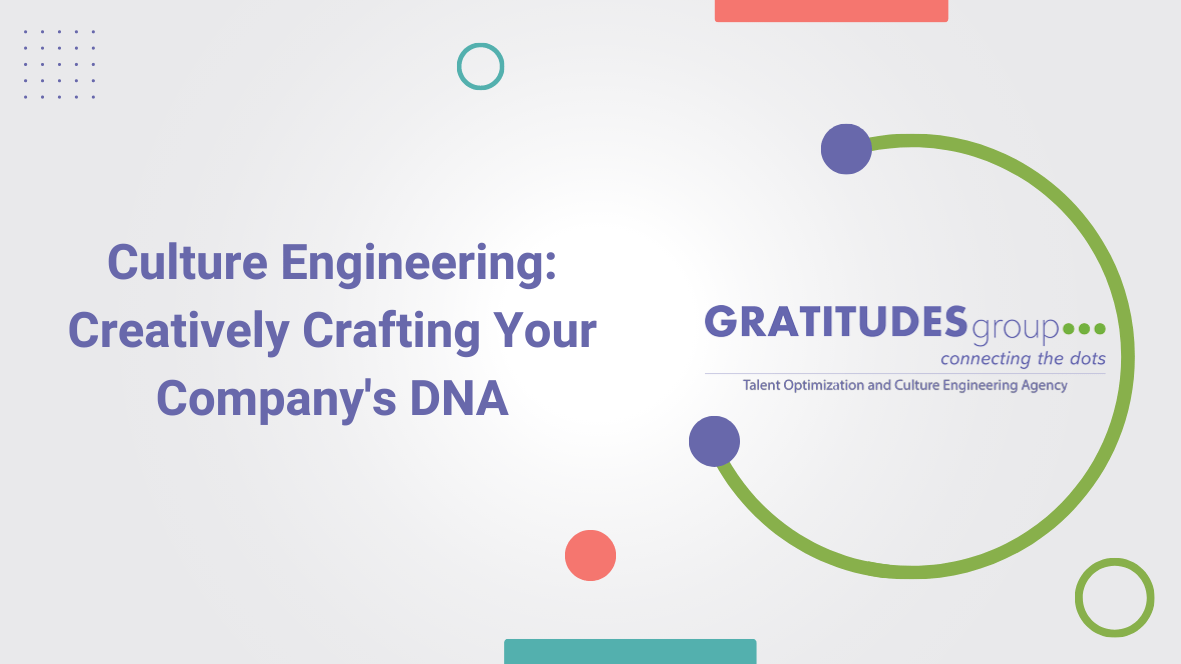In today’s world of rapidly changing social, economic, and technological landscapes, companies and organizations are increasingly called upon to adapt to new realities in order to survive and thrive.
One important aspect of this process is the cultivation of a healthy, vibrant company culture. The term “culture engineering” refers to the intentional and strategic effort to shape this culture to meet the needs of a specific organization.
In this post, we’ll explore the why, what, and how of culture engineering, and examine some case studies of successful efforts to shape organizational culture for the better. We will also highlight the potential benefits of culture engineering for everyone involved, from businesses and organizations to society as a whole.
What is culture engineering and why is it important?
Culture engineering is the process of intentionally designing, implementing, and managing a company or organization’s culture in order to achieve a specific set of goals. These goals might include improved employee satisfaction and retention, increased creativity and innovation, enhanced product quality or customer satisfaction, greater long-term stability, or any number of other business objectives.
Culture engineering recognizes that culture is not only formed organically, but can be intentionally shaped through strategic actions and investments. Culture engineering is important because a healthy, vibrant workplace culture helps ensure long-term sustainability and success for a company or organization.
How is culture engineering different from other forms of cultural management?
Culture “engineering” differs from other forms of cultural management in that it is proactive and intentional. Whereas cultural “management” might simply involve responding to problems as they arise or attempting to maintain the status quo, culture engineering seeks to actively shape culture in order to achieve strategic goals.
Culture engineering also recognizes that cultural change is not just a matter of policies and procedures – it involves influencing people’s attitudes, beliefs, and values.
What are some examples of successful culture engineering efforts?
One example of successful culture engineering is the transformation of automotive company Ford in the early 2000s under CEO Alan Mulally. Mulally recognized that Ford’s culture had become stagnant and inward-focused, leading to a decline in innovation and competitiveness. He initiated a series of culture engineering efforts that included developing a set of core values, implementing an open communication platform, and creating cross-functional teams to drive innovation. These efforts paid off in the form of increased employee morale and engagement, reduced costs, and improved quality and reliability of Ford’s products.
Another example of successful cultural engineering is the efforts of online retailer Zappos to create a distinct and unusual organizational culture. Zappos has famously developed a strong focus on customer service, which is reflected in their culture through policies like “no time limits” for customer service calls and the inclusion of customer satisfaction ratings in employee evaluation metrics.
Zappos also emphasizes transparency, with widespread sharing of financial and performance data among all employees. These efforts have paid off in the form of highly engaged employees, a strong reputation for customer service, and consistent growth and profitability.
How can culture engineering be used to promote diversity and inclusion?
Culturel engineering can play a role in promoting diversity and inclusion by intentionally designing a workplace culture that values and celebrates differences. This might involve efforts to increase diversity in hiring and promotion, creating mechanisms for feedback and open communication, and developing policies and procedures that are inclusive of all employees.
For example, the consulting firm Deloitte has implemented a number of culture engineering efforts to promote diversity and inclusion, including a diversity council to develop and oversee inclusion initiatives, unconscious bias training for all employees, and targeted efforts to recruit and retain diverse talent.
What role does technology play in culture engineering?
Technology plays an increasingly important role in culture engineering, as it provides tools and platforms for communication, collaboration, and information-sharing. From social media to virtual reality, technology offers a range of possibilities for shaping organizational culture.
For example, the online retailer Amazon has implemented a number of culture engineering efforts involving technology, such as an internal social media platform for communication and collaboration, data analytics tools to inform decision-making, and artificial intelligence-driven performance evaluations for employees.
How can culture engineering be used to drive social change and activism?
Culture engineering can be a powerful tool for driving social change and activism by intentionally designing a corporate culture that values and promotes social justice and positive change. This might involve efforts to align company values and mission with social causes, creating partnerships and collaborations with activist organizations, and developing internal policies and procedures that reflect a commitment to social responsibility.
For example, the outdoor clothing company Patagonia has implemented a number of culture engineering efforts to promote environmental activism and awareness, including extensive sustainability efforts, partnerships with environmental organizations, and a commitment to donating 1% of profits to environmental causes.
What are some potential drawbacks or ethical considerations when engaging in culture engineering?
One potential drawback of cultuel engineering is the risk of over-engineering – that is, attempting to dictate every aspect of culture to the point of stifling creativity and spontaneity.
Another potential challenge is the risk of unintentional consequences – that is, attempting to promote a certain set of values or goals without considering how they might impact different groups of people or the broader social context.
Ethical considerations might include concerns around privacy, transparency, and the potential misuse of data in culture engineering efforts.
How can individuals and organizations get started with culture engineering?
Individuals and organizations can get started with culture engineering by first taking stock of their existing workplace culture and identifying any areas where improvements might be needed. This involves gathering feedback from employees, customers, and other stakeholders, as well as conducting a thorough analysis of organizational values and practices.
From there, it’s important to set clear goals and identify specific interventions or policies that can help achieve those goals. It’s also important to measure impact and regularly evaluate and adjust culture engineering efforts based on feedback and outcomes.
What are some best practices for culture engineering and how can success be measured?
Some best practices for culture engineering include creating a strong and clear set of core values, promoting transparency and communication, fostering a sense of community and belonging, and regularly collecting and analyzing feedback from employees and customers.
Success in culture engineering efforts can be measured through a number of metrics, including employee retention and satisfaction rates, customer satisfaction rates, productivity and efficiency, innovation rates, and financial performance. It’s also important to regularly evaluate and adjust culture engineering efforts based on results.
In our rapidly changing business and social landscape, the intentional and strategic shaping of organizational culture has become an increasingly important aspect of long-term business success and sustainability. Culture engineering offers a unique and powerful tool for achieving these goals, enabling individuals and organizations to creatively design and manage their own cultural DNA in ways that promote innovation, engagement, social responsibility, and positive change.
By taking heed of the best practices and potential challenges inherent in culture engineering efforts, individuals and organizations can drive meaningful and lasting change in their businesses, communities, and lives. Reach out to GRATITUDESgroup today to learn more about how culture affects your business and how we can help engineer it for success.








